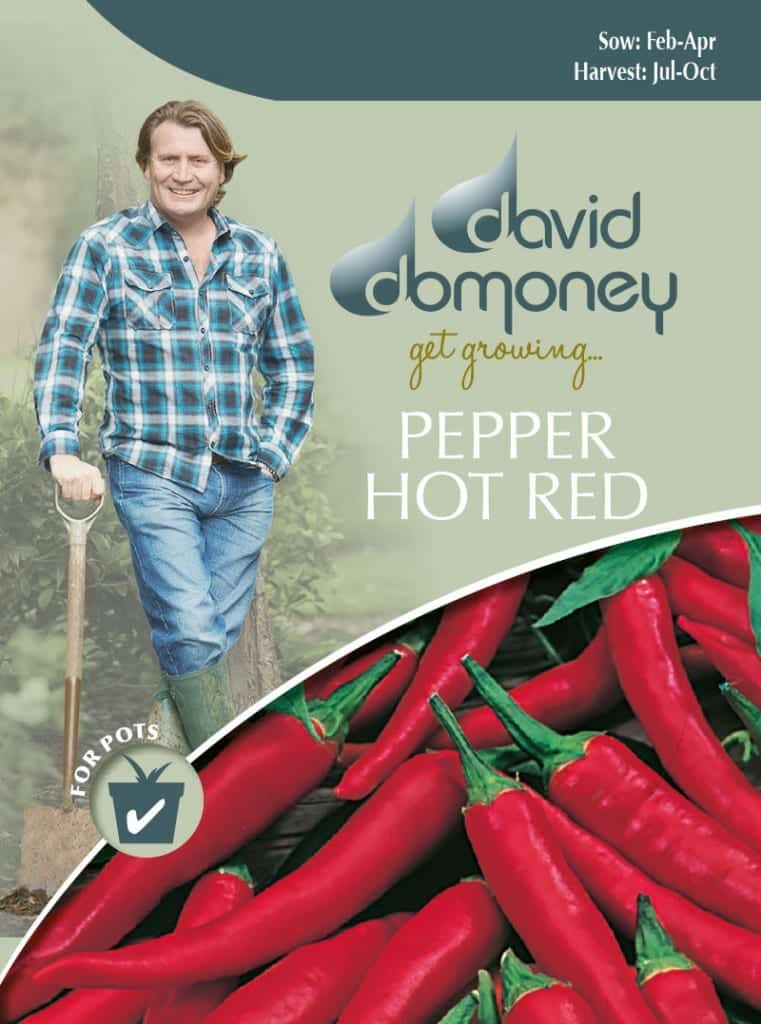Pepper Hot Red (De Cayenne)
The classic long and slim red chilli pepper with a lovely fruity flavour and just the right amount of bite. The large bushy plants are high yielding, producing a mass of fruit with each one growing up to 10cm long. Extremely versatile, they are often used for drying as they retain their flavour very well. The peppers can also be eaten when immature and still green if you prefer them a little bit milder.
Growing Advice

Sow indoors February to April. Sow 0.5cm deep into individual pots of compost. Water well and place in a warm, light position, away from cold draughts and out of intense, direct sunlight. Keep the compost just moist and be careful not to overwater, the compost should almost dry out before it is watered again. Seedlings should start to appear in approximately 7-21 days. In late May, acclimatise plants to outside conditions. Place pots outside in a sheltered spot during the day and bring them inside again at night when the temperature falls. Do this for a week or two, until the plants have hardened off. Plant out to large patio pots or tubs and place in a sheltered sunny growing position such as a patio or balcony. Alternatively plant out into a greenhouse border or grow bags. Large plants may require some support as the number of peppers increase.

Top Tips About Seeds
Once the seed packet has been opened, the seeds can be stored in an airtight container until required for further sowings. pepper seeds will maintain their vigour for a good number of years.

Peppers are ideal for patio pots, for the earliest and largest crops possible grow plants in a greenhouse or polytunnel, however a few plants grown on a sunny patio will produce more than enough chillies for the average household.
Pepper are usually trouble free but as with most plants it is important to water regularly and to allow the compost to almost dry out before watering again so that they are not over-watered. Sometimes greenfly or caterpillars can attack a plant but these can just be picked off and are unlikely to affect the quality of the harvest.
Harvest chilli peppers as they are required, from July to October. Fresh chillies have the best possible flavour and the more mature they are the hotter they become. Picking chillies at different stages of maturity will add a nice mix of colours to a dish.

Ideas on how to use your Pepper Hot Red
Begin providing a regular liquid feed as soon as the first flowers begin to appear, this will significantly increase the size of the crop and help to maintain the health of the plants. A tomato fertilizer usually works well. Reducing the watering at the end of the season will encourage the fruit to ripen. Surplus chillies are best frozen whole, they last longest that way and can just be chopped from frozen and used straight away. When harvesting chillies it is best to use scissors or secateurs, simply pulling them from the plant can easily break a stem or a branch. Don’t forget to wash your hands after handling chilli peppers, the juice can be quite painful if it get into your eyes.

Leave A Comment